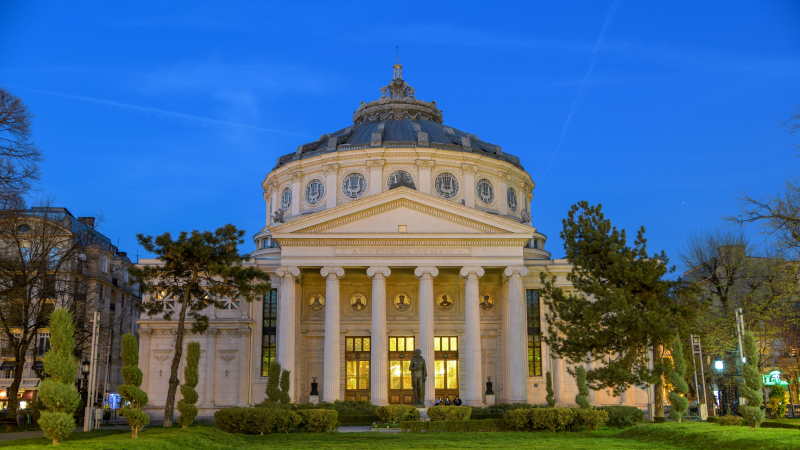Romanian Athenaeum
The Romanian Athenaeum is a concert hall in the center of Bucharest and a landmark of the Romanian capital city. This building was one of the reasons why Bucharest received the nickname "Little Paris." The Romanian Athenaeum was built between 1886 and 1888 to house the specific activities of the Romanian Philharmonic Society, as it was known at the time (an institution founded in 1868). The interior of the athenaeum (the concert hall) has a capacity of nearly 800 seats under a dome measuring 16 meters in height and 28.5 meters in diameter. The Romanian Athenaeum was designed by French architect Albert Galleron in collaboration with Romanians Grigore Cerchez, Constantin Olanescu, Ion Mincu, and Ion Gr. Cantacuzino. The building's style is neoclassical, but it also incorporates elements of eclecticism and 19th-century French architecture.
If the Athenian's primary function is that of a concert hall, it also serves a symbolic function, representing the greatness of Romanian cultural heritage and evoking the glorious past of some significant historical figures. The names and representations of the era's memorable personalities, as well as the names of the arts and scientific fields, can be found both inside and outside the hall. The mosaic portraits of five rulers are displayed beneath the triangular pediment, which is supported by six majestic ionic columns: Neagoe Basarab, Alexandru cel Bun, Vasile Lupu, Carol I, and Matei Basarab. The golden mosaic recalls the country's Byzantine heritage and suggests a true dynastic figure cult. The Philharmonic has held concerts there continuously since 1888, but the Athenaeum has also hosted conferences, painting exhibitions, and symposiums.
Google rating: 4.8/5
Address: 1, Strada Benjamin Franklin 1-3, București 030167, Romania
Phone: +40 21 315 2567
Website: http://fge.org.ro/













